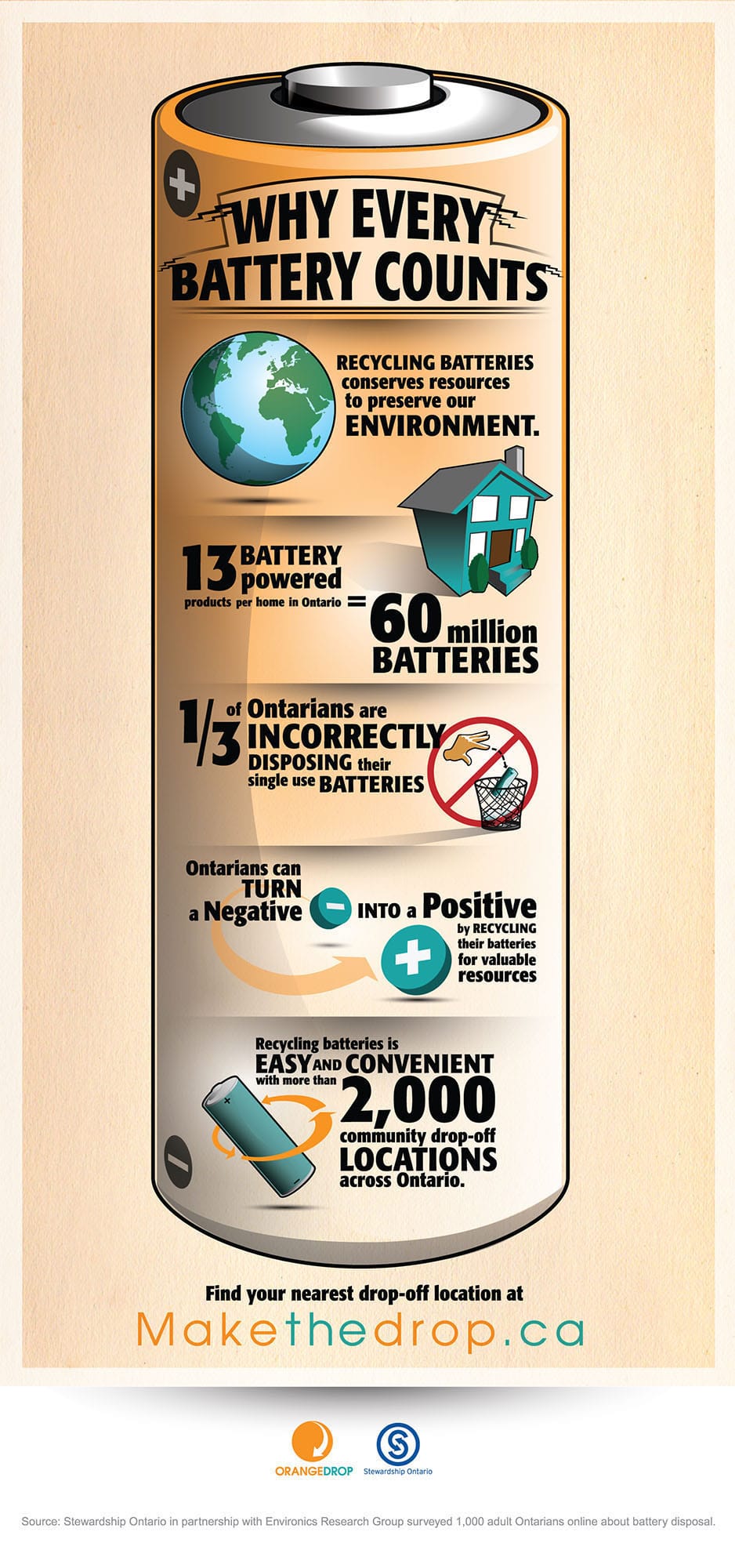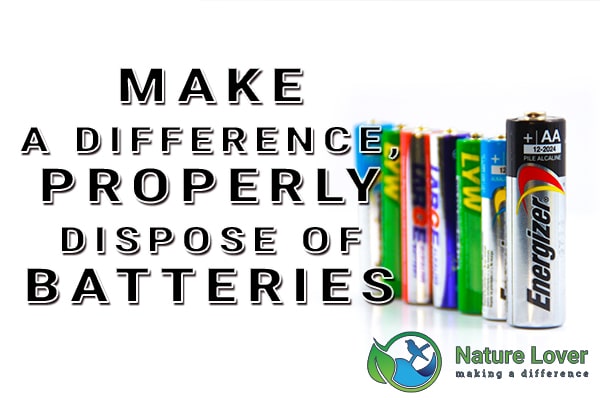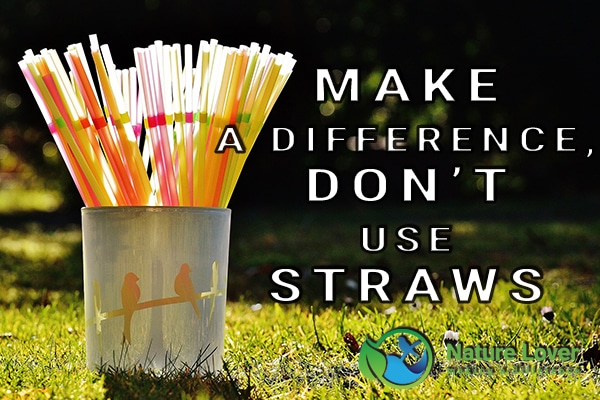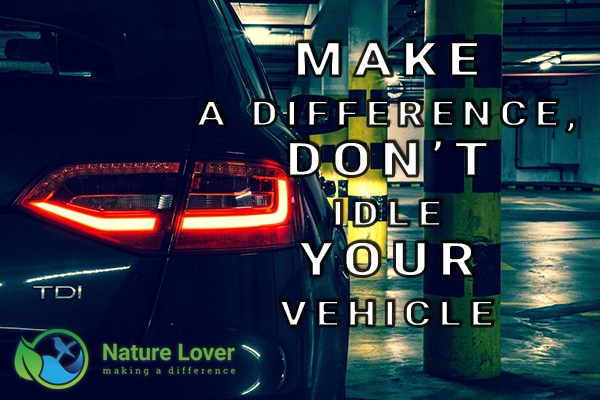Many of us do not know the ‘Do’s and Don’ts’ of disposing batteries and it is very important to know what you can recycle, where you can recycle and how to do it.
The production of batteries requires several steps, each of which has an environmental impact. First the minerals need to be mined, a factory then processes those minerals into chemicals and the final steps involves a factory producing and shipping the batteries. These stages create air, water and land pollution. Each step gives off greenhouse gases and results in CO2 emissions. The mining causes deforestation, erosion and habitat loss. Disposing of the batteries incorrectly will result in the release of hazardous waste.
By recycling used batteries we can recover materials that then can be used in other applications, like new batteries, and saves energy by reducing the need for more raw materials. Depending on the type of battery, many materials came be recovered: zinc, steel, ferromanganese, nickel, lead, cadium and silver.
DO
Recycle your old batteries.
Remove batteries from devices that are plugged in.
Tape the top of lithium-based batteries and any battery of 9 volts or more.
Use the right size and type of battery.
[one_half_last]
DON’T
Carry batteries loose where they may come into contact with metal objects – they can be shorted, may leak, overheat or rupture.
Leave batteries in devices that aren’t going to be used for several months – they may leak.
Try to recharge non-rechargeable batteries.
Put batteries in the refrigerator.
Keep batteries in really cold or really hot locations.
Try to take apart of battery.
Throw batteries into your regular trash.
Dispose of batteries in a fire.
[/one_half_last]

Sources:
“Battery Care, Use and Disposal | Duracell Batteries.” Duracell Batteries. N.p., n.d. Web. 10 May 2016.





